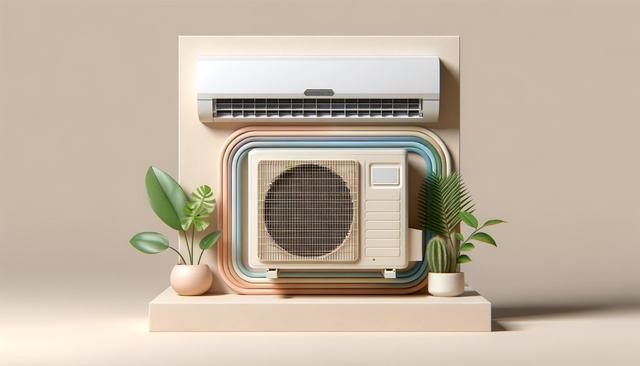What is Ductless Air Conditioning?
Ductless air conditioning systems, also known as mini-split systems, are a highly efficient alternative to traditional HVAC systems. Unlike conventional systems that rely on a network of ducts to distribute air, ductless systems deliver cool air directly into different zones through a compact indoor unit. This setup makes them ideal for homes or buildings without existing ductwork. The core components of a ductless system include an indoor unit, an outdoor compressor, and a conduit that houses the power cable, refrigerant tubing, and a condensate drain.
Why Choose Ductless?
There are several compelling reasons to consider ductless air conditioning. Firstly, these systems offer exceptional energy efficiency, often outperforming traditional systems. This is largely due to their ability to cool specific areas, reducing energy waste. Additionally, ductless systems are known for their quiet operation, providing a serene indoor environment. They are also flexible and can be installed in a variety of locations, from single rooms to entire floors. Some benefits of ductless air conditioning include:
- Customized climate control for individual rooms
- Reduction in energy consumption and lower utility bills
- Easy installation process without the need for extensive renovations
Installation and Maintenance
Installing a ductless AC system is generally quicker and less invasive compared to traditional systems, as it doesn’t require ductwork. The process involves mounting the indoor unit on a wall, connecting it to the outdoor unit through a small hole. This simplicity makes ductless systems a popular choice for retrofitting older properties or adding climate control to new extensions. Maintenance is also straightforward, typically involving regular cleaning of filters and occasional professional servicing to ensure optimal performance.
Environmental Benefits
Ductless air conditioning systems contribute to environmental conservation through their high energy efficiency. By minimizing energy use, they reduce the carbon footprint associated with cooling spaces. Furthermore, many ductless systems use eco-friendly refrigerants, which have a lower impact on the ozone layer compared to those used in older systems. This alignment with sustainable practices makes them a forward-thinking choice for environmentally conscious homeowners.
Addressing Common Concerns
While ductless systems offer numerous advantages, potential users may have concerns about initial costs. Although the upfront investment can be higher than that of conventional systems, the long-term savings on energy bills and maintenance often offset this initial expenditure. Additionally, some homeowners worry about the aesthetic impact of the indoor units. However, modern ductless systems come in sleek designs and can be strategically placed to blend with the decor. Addressing these concerns can help more people recognize the value ductless systems bring to modern living spaces.
Conclusion
Ductless air conditioning systems stand out as a versatile and efficient solution for achieving optimal indoor comfort. Their ability to provide targeted cooling without the need for extensive ductwork makes them particularly appealing for homes and buildings undergoing renovations or expansions. As energy costs continue to rise and environmental awareness grows, the demand for ductless systems is likely to increase, offering a sustainable way to enjoy a comfortable living environment.
